What comes to your mind when someone says "Chinese culture"? Filial piety? Conformism? Collectivism over individualism?
How about defiance, determination, and perseverance in the face of oppressive powers?
In the Western view of Chinese people, these are not qualities commonly associated with us. We are more often seen as the ideal Model Minority willing to bury our noses in hard work without causing trouble or voicing complaints. We are given pats on the head and weaponized against other minorities as an example of what they could aspire to be if they would only stop “acting out” against the systemic pressures designed to keep them at the bottom of society.
Yet, if you look at Chinese folklores, you’ll find a rich tradition of defiance and rebellion beneath the surface impressions of our culture. The stories we pass on have always been about defying higher powers and besting them through ingenuity and hard work.
Exhibit 1: 刑天 (Xing Tian)
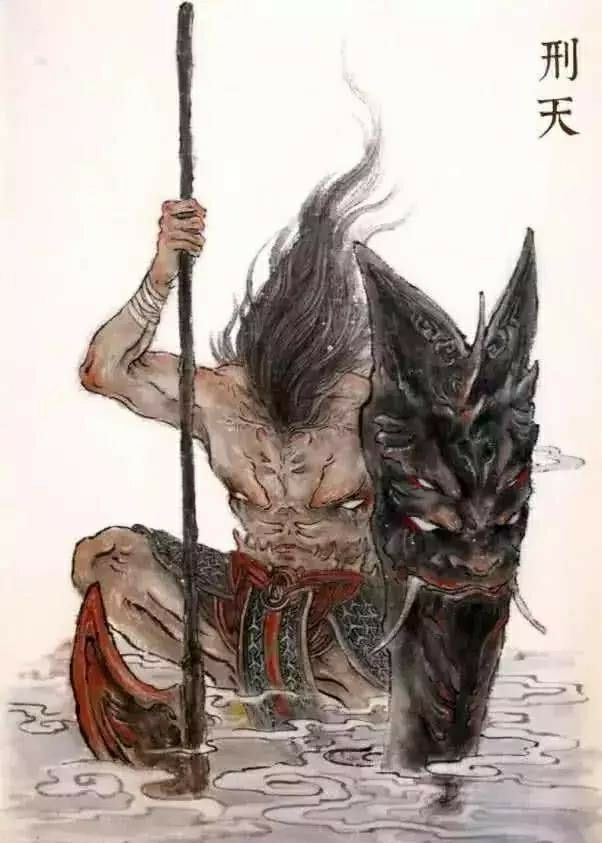
In mystical times, there were two tribes that contended for sovereignty over the land that would become China: one led by the Yellow Emperor and one led by the Flame Emperor. Their conflict culminated in the epic Battle of Banquan, said to be so intense that the pole weapons of the fallen soldiers floated on the sheer amount of blood being spilled.
Xing Tian was a warrior who fought under the Flame Emperor's banner. The Yellow Emperor subdued the Flame Emperor in the end, but Xing Tian took it upon himself to make another attack on the Yellow Emperor's palace in the Central Heavens. With his shield and ax, he fought the Yellow Emperor all the way down to Mount Changyang in the mortal realm. Finally, the Yellow Emperor saw an opening and decapitated Xing Tian with his sword. He then buried Xing Tian's head far from his body.
However, Xing Tian's willpower was so strong that his body rose up to keep fighting, using his nipples as his new eyes and his navel as his new mouth. Ever since, Mount Changyang has been surrounded by heavy clouds. Thunder frequently rumbles in the valleys nearby, said to be Xing Tian brandishing his shield and ax in an undying quest for vengeance.
Exhibit 2: 鲧 (Gun)
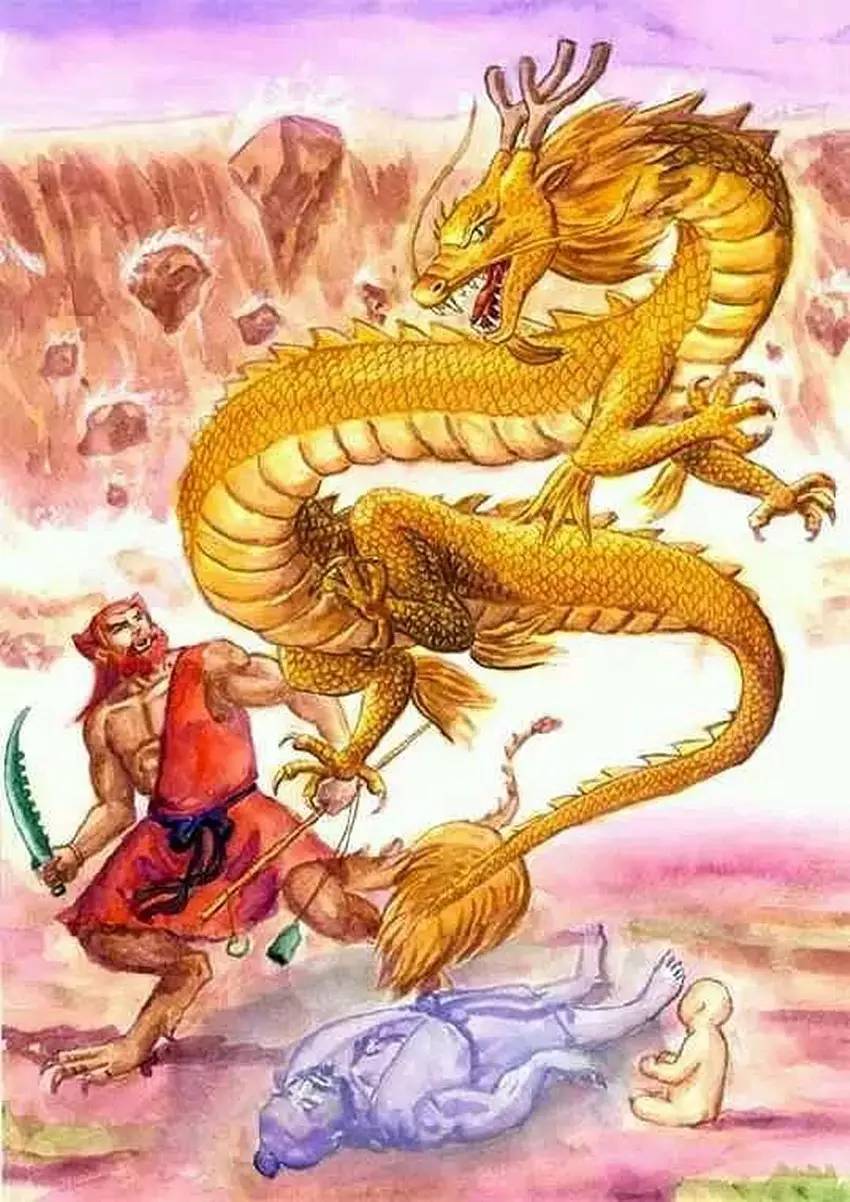
Gun was an official who served under the mythical king Yao. He reportedly had a nasty temper, but when the Yellow River flooded over, he was nominated as the best person to handle it. However, it was more difficult than expected. Even after 9 years of effort, he couldn't finish the job. He pleaded to the gods for help, but they refused to provide any.
So he outright stole 息壤 (xirang), a kind of self-rising Breathing Earth, from the Heavenly Emperor and used it to build levees. Just when he came close to taming the flood, the Heavenly Emperor discovered the thievery and collapsed the levees in a rage. He then sent the fire god Zhurong to execute Gun.
Gun’s story is somewhat similar to that of Prometheus', though even death didn't make him give up. His body did not rot for three years, after which his son, later known as Yu the Great, burst out from his belly to continue his mission to stop the flood.
Exhibit 3: 大禹 (Yu the Great)
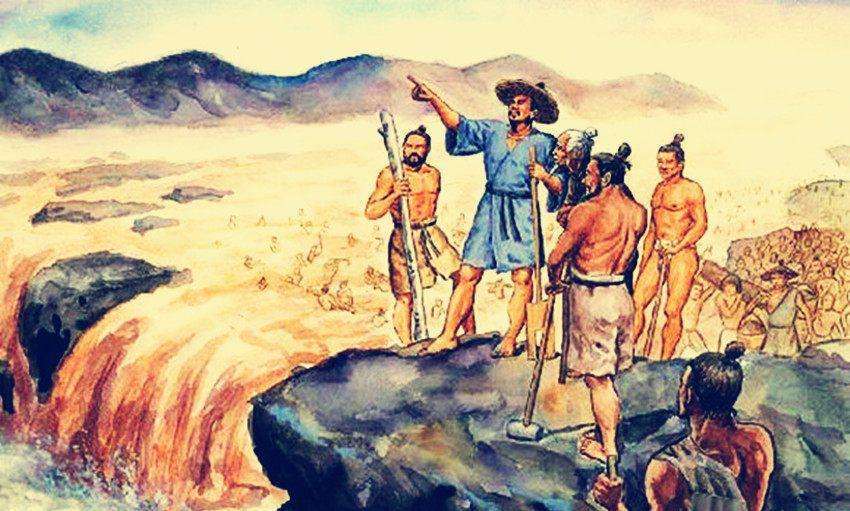
Yu the Great is perhaps the most famous folk hero in Chinese culture. Under the pressure of his father, Gun, having been executed for failing to tame the flood, Yu set out to finish the job his father started. He spent 13 years building levees, canals, and irrigation systems to relieve the constant floodwaters. Legend has it that although he passed his home 3 times during those 13 years, he never dared put down his work to visit his wife and child.
Many cultures have a flood myth, but the Chinese one is unique in that instead of being saved by divine forces, humans managed to control it with their own smarts and hard work.
Yu was so respected for his achievements that he was eventually given the throne by the mythical king Shun, and went on to found China’s first dynasty, Xia.
Exhibit 4: 羿 (Yi the Archer)

Aside from floods, ancient China was also at the mercy of droughts. Legend has it that there were once 10 sun gods, corresponding to the 10 days of a week in the ancient Chinese calendar. One day, the 10 sun gods decided to troll humanity by rising all at once, scorching the earth and evaporating the rivers.
A hero, Yi*, was tasked with handling the rogue suns. Yi was King Yao’s (the same king that Gun served under) archery teacher, said to have been abandoned in the wild mountains when he was 5 and where he perfected his craft.
He tried to reason with the sun gods at first, but when they refused to listen, he whipped out his bow and shot 9 of them down. The last sun was spared due to the pleas of the sun's mother, and agreed to rise on schedule ever since.
*Note: Yi is often confused with Houyi, who is actually a whole different person, a tribal leader during the Xia dynasty.
Exhibit 5: 精卫 (Jingwei)

Jingwei was once the Flame Emperor’s youngest daughter. Her father was always busy, so she often had to play by herself, wearing flowers in her hair and red shoes on her feet. Her one dream was to visit the place where the sun rose over the East Sea, but her father told her it was too dangerous.
One day, she snuck out and rowed out to sea in a small boat. Before she could see the sunrise, however, a strong tide overturned her boat, and she drowned. Afterward, her spirit reincarnated into a bird, the flowers in her hair turning into beautiful patterns on its head and her red shoes turning into red claws.
She vowed to get revenge by filling the ocean up, one stick or pebble at a time.
It's a seemingly impossible task, yet she persisted. Her sheer tenacity eventually touched the water god, Gong Gong, who helped by pushing yellow silt into the East Sea, turning parts of it yellowish (and that’s why it’s now called the Yellow Sea).
Whenever the ocean feels like it's in danger of being filled, it pushes the silt back against the shore. Grateful for the new arable land, the residents along the shore keep the memory of Jingwei and her gargantuan undertaking.
Exhibit 6: 孟姜女 (Lady Meng Jiang)
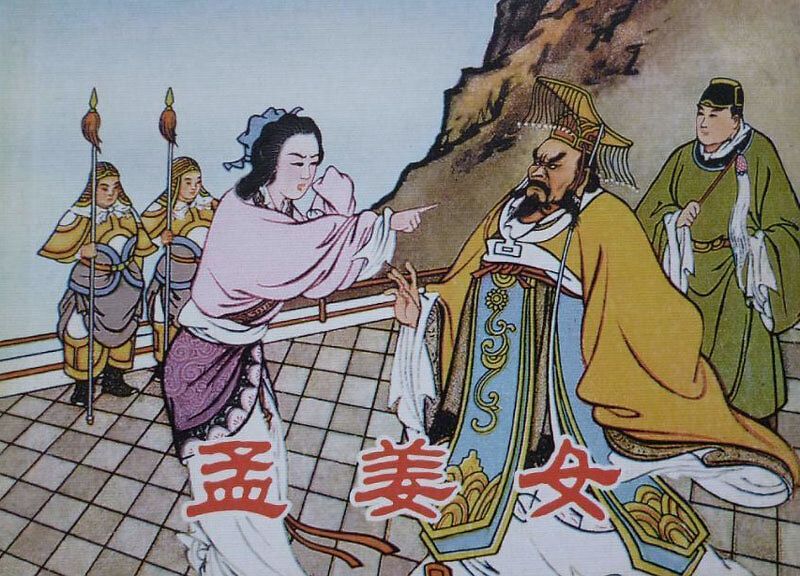
Lady Meng Jiang's story is one of the Four Great Folktales in Chines culture. In it, her husband was conscripted to build the Great Wall. After hearing nothing from him for a while, she set out to bring him some clothes for winter. Only when she got to the Wall was she told that he had long died. She then wept so bitterly that part of the Wall collapsed, revealing his bones.
Embellishments in later dynasties tell of how she took her grievances all the way to the Emperor (frequently Qin Shi Huang, the first emperor of China), who was so transfixed by her beauty that he tried to take her as a concubine. Refusing to comply, she tricked him into throwing several ceremonies honoring her dead husband before committing suicide.
Her legend stands as a symbol of defiance against tyranny, especially under emperors who order massive construction projects with no regard to the suffering of the common people.
Exhibit 7: 愚公 (Yu Gong, The Foolish Old Man)
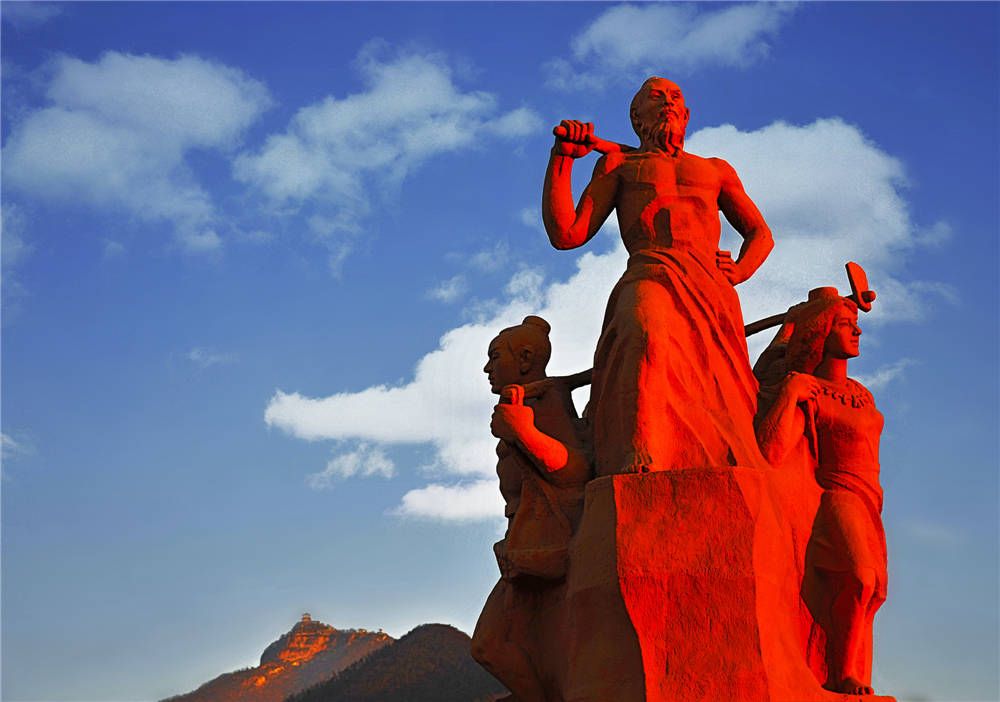
The Foolish Old Man, or Yugong, is the subject of a famous fable that perfectly embodies the Chinese belief in persistence and long-lasting traditions. He was an old man who lived behind two large mountains that caused his family great inconvenience.
Finally, he decided to chisel the mountains away, one barrel of dirt at a time. When the gods saw what he was up to, they laughed at him for being a fool. But he retorted with "Yes, this work will not be done in my lifetime, but my descendants will keep it up, and their descendants as well, all while the mountains will only shrink, not grow.”
Stricken by his tenaciousness, the Heavenly Emperor sent two giants to move the mountains away for him and his family.
As you can see from these 7 popular legends, the heart of Chinese folklore pulses with defiance and self-agency. It is, in fact, not our culture to blindly bow down and obey. Our greatest heroes can overcome rivers, mountains, oceans, tyrants, or even gods through determination and lasting effort.
In this age of facing intensified oppression due to matters such as COVID19, or standing in solidarity against police brutality,
we who are of Chinese heritage must draw strength from our mythologies of defiance and refuse to lower our heads.
When the dominant forces attempt to use us as a talking point against others, we must not stay silent. We must encourage our communities to idle no longer. Resistance requires an active effort and strength in numbers.
Like Xing Tian, Gun, Yu the Great, Yi the Archer, Jingwei, Lady Meng Jiang, and the Foolish Old Man, we will face much hardship. And if we persist in spite of it, we will win.

Comments powered by Talkyard.